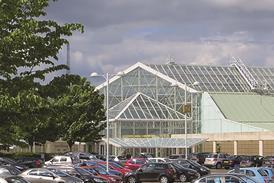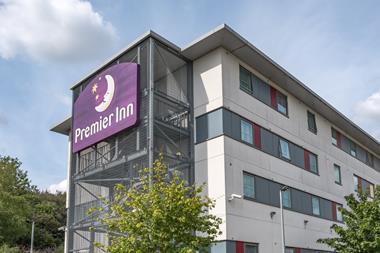The decline of the department store sector has been under way for the last 10 years. Around 85% of those occupied by the former ‘traditional’ operators have closed, with problems increasing since the collapse of BHS. This begs the question of whether the concept of the department store is truly dead or if it has evolved into something unrecognisable from the traditional model.

A multitude of factors including poor management, rapid over-expansion of physical store estates, a lack of digital investment and a failure to keep up with ever-changing consumer habits are to blame for the closure of numerous department stores. Many lacked innovation, meaning people no longer viewed them as exciting destinations to shop. As consumers found what they needed elsewhere, several stores were forced to close or go into administration.
However, this isn’t the case for all department stores, with the likes of Selfridges and Harrods continuing to attract buyers through their doors due to the experiential nature of their stores and excellent product offerings. Their undeniable success signals that the department store can thrive under the right conditions.
In fact, more than half of department stores are still being used for retail purposes, and many have been transformed to appeal to modern audiences. John Lewis, for example, closed 16 stores during the pandemic – but most of its estate remains trading. It has shown an innovative approach to the changing market in its recent launch of a new 47,000 sq ft small-store format in its former ‘At Home’ branch in Horsham.
Next has seen phenomenal success over the years both online and in physical stores, investing heavily in its digital strategy. In 2022, it launched its first department-style store – a 94,000 sq ft store in Watford, Hertfordshire – signalling a unique approach towards keeping the legacy alive while catering to changing consumer preferences. This store combines all its offerings in one place – fashion, home and beauty – for the first time. It recently forecast a second upgrade of profits for 2023, highlighting the strength of the brand, despite the current economic climate.
Retailers continue to acquire former department stores, particularly in prime locations, as they realise they need bigger-format stores to meet growing customer demand and to showcase their wider product ranges, which are available online.
Next’s and Marks & Spencer’s strategy of acquiring well-located ex-department stores seems to be paying off as they both reported higher-than-expected sales this year. Online retail is obviously a challenge for physical retail, but the most successful have embraced it, realising that consumers still want the experience of in-store purchasing, whether that be in a beauty hall or a restaurant or interacting with new technology. What may prove taxing for retailers is the constant development to retain and attract customers, and the uncertainty of the market.
For less successful operators that were forced to close, innovative adaptive transformations of their department stores are taking place, with some retaining their retail components as part of a wider mixed-use development. The integration of residential, commercial and leisure spaces in these schemes not only preserves the architectural heritage of former stores but also adds vibrancy to urban landscapes.
Sports Direct’s acquisition of House of Fraser provides a prime example, with plans to redevelop half of its closures, including London’s Oxford Street branch, which will be converted into a mixed-use scheme including retail and offices.
This is also the case for London’s Westfield store, which has been acquired by Ministry of Sound, with plans for it to be converted into a gym, restaurant and offices in 2024.
Other mixed-use schemes look to capitalise on the growing demand for consumers seeking experiential activities. Almost half of the Debenhams estate remains vacant, with Marks & Spencer acquiring former branches including Stevenage and Leeds, while Gravity Leisure acquired two stores that were converted into entertainment complexes.
And innovation expands beyond consumerism, with the conversion of Beale’s Poole store into an NHS outpatient clinic, which was acquired after it closed down all of its 23 units in 2020.
Private rented residential developments are an important part of John Lewis’s future strategy, with three sites having been announced as the location for up to 10,000 new homes in the next 10 years, as part of the UK’s growing build-to-rent market. The proposals include building over Waitrose shops in Bromley and West Ealing in Greater London, as well as replacing a vacant John Lewis warehouse in Mill Lane, Reading.
Creative solutions are essential to tackle the remaining vacant stock, and what’s required will largely depend on location and demographic on a case-by-case basis. There will have to be careful consideration around the redevelopment of these sites – some stores will choose to remain as retail, but it may not be in the traditional sense as we know it. Other sites will no longer be viable for retail purposes, so the space is likely to be used as offices, health facilities or housing, or a mix of these with some retail. In all cases, it’s clear that operators must continue to evolve to meet the changing retail landscape.
Lesley Males is director market intelligence at Avison Young































No comments yet